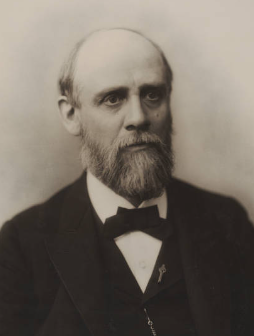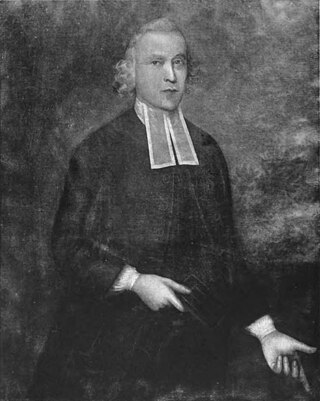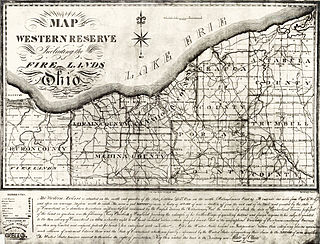Related Research Articles

Timothy Dwight was an American academic and educator, a Congregationalist minister, theologian, and author. He was the eighth president of Yale College (1795–1817).

Theodore Sedgwick was an American attorney, politician, and jurist who served in elected state government and as a delegate to the Continental Congress, a U.S. representative, and a senator from Massachusetts. He served as President pro tempore of the United States Senate from June to December 1798. He also served as the fourth speaker of the United States House of Representatives. He was appointed to the Massachusetts Supreme Judicial Court in 1802 and served there for the rest of his life.

Grove Street Cemetery or Grove Street Burial Ground is a cemetery in New Haven, Connecticut, that is surrounded by the Yale University campus. It was organized in 1796 as the New Haven Burying Ground and incorporated in October 1797 to replace the crowded burial ground on the New Haven Green. The first private, nonprofit cemetery in the world, it was one of the earliest burial grounds to have a planned layout, with plots permanently owned by individual families, a structured arrangement of ornamental plantings, and paved and named streets and avenues. By introducing ideas like permanent memorials and the sanctity of the deceased body, the cemetery became "a real turning point... a whole redefinition of how people viewed death and dying", according to historian Peter Dobkin Hall. Many notable Yale and New Haven luminaries are buried in the Grove Street Cemetery, including 14 Yale presidents; nevertheless, it was not restricted to members of the upper class, and was open to all.

Timothy Dwight V was an American academic, educator, Congregational minister, and President of Yale University (1886–1898). During his years as the school's president, Yale's schools first organized as a university. His grandfather was Timothy Dwight IV, who served as President of Yale College ninety years before his grandson's tenure.

Jonathan Hunt was an American lawyer and politician from Vermont. He was a member of the United States House of Representatives for the state of Vermont and was a member of the prominent Hunt family of Vermont.

The Boston Brahmins or Boston elite are members of Boston's traditional upper class. They are often associated with a cultivated New England or Mid-Atlantic dialect and accent, Harvard University, Anglicanism, and traditional British American customs and clothing. Descendants of the earliest English colonists are typically considered to be the most representative of the Boston Brahmins. They are considered White Anglo-Saxon Protestants (WASPs).

George Hoadly was a Democratic politician. He served as the 36th governor of Ohio.

Theodore Dwight Woolsey was an American academic, author and President of Yale College from 1846 through 1871.

John Smith was an American politician who served as a United States senator from New York from 1804 to 1813. He previously was the U.S. representative for New York's 1st congressional district from 1800 to 1804. He was a member of the Democratic-Republican Party.

Joseph Bellamy was an American Congregationalist pastor and a leading preacher, author, educator and theologian in New England in the second half of the 18th century. He was a disciple of Jonathan Edwards, and along with Samuel Hopkins, Timothy Dwight IV, Nathaniel William Taylor, and Jonathan Edward Jr., one of the "Architects of the New Divinity", a branch of the New Light movement that came out of the Great Awakening. A proponent of education for both clergy and laity, for a half century out of his rural Bethlehem, Connecticut church he trained fifty ministers, and founded what was possibly the first American Sabbath or Sunday school.
Sereno Edwards Dwight was an American author, educator, and Congregationalist minister, who served as Chaplain of the Senate.

Henry Dwight Sedgwick III was an American lawyer and author.

Benjamin Pickman Jr. was a U.S. Representative from Massachusetts.

The Livingston family of New York is a prominent family that migrated from Ireland to the Dutch Republic, and then to the Province of New York in the 17th century. Descended from the 4th Lord Livingston, its members included signers of the United States Declaration of Independence and the United States Constitution. Several members were Lords of Livingston Manor and Clermont Manor, located along the Hudson River in 18th-century eastern New York.

Rev. Dudley Leavitt (1720–1762) was a Congregational minister born in New Hampshire, educated at Harvard College, who led a splinter group from the First Church in Salem, Massachusetts, during a wave of religious ferment nearly a decade before the Great Awakening. Following Leavitt's death at age 42, his congregation elected to christen itself 'The Church of Which the Rev. Dudley Leavitt was late Pastor' after the charismatic preacher. Leavitt Street in Salem is named for the early minister.

Capt. John Wheeler Leavitt (1755–1815), born in Suffield, Connecticut, was an early settler of Ohio's Western Reserve lands, where members of his family had bought large tracts from the state of Connecticut, and where Capt. Leavitt became an early innkeeper, politician and landowner in Warren, Trumbull County, Ohio. Capt. Leavitt was a member of the Connecticut Land Company and along with his cousin Ebenezer King from Suffield, paid over $51,000 for approximately 78,500 acres (318 km2) of Ohio land, which included the township of Warren. The Leavitt family of Warren would go on to play a substantial role in the history of their adopted town and in Ohio.

The Quincy family was a prominent political family in Massachusetts from the mid-17th century through to the early 20th century. It is connected to the Adams political family through Abigail Adams.
Joseph Badger was a portrait artist in Boston, Massachusetts, in the 18th century. He was born in Charlestown, Massachusetts, to tailor Stephen Badger and Mercy Kettell. He "began his career as a house-painter and glazier, and ... throughout his life continued this work, besides painting signs, hatchments and other heraldic devices, in order to eke out a livelihood when orders for portraits slackened." In 1731 he married Katharine Felch; they moved to Boston around 1733. He was a member of the Brattle Street Church. He died in Boston on May 11, 1765, when "on Saturday last one Mr. Badger, of this Town, Painter, was taken with an Apoplectic Fit as he was walking in his Garden, and expired in a few Minutes after." Works by Badger are in the collections of the Worcester Art Museum, the Museum of Fine Arts Boston, and Historic New England's Phillips House, Salem, Mass. While respected in his own time, subsequent scholars and connoisseurs largely overlooked Badger's significance until Lawrence Park wrote a book about him in 1918.
Gardiner Greene Howland was a prominent American businessman who was a founding partner in the merchant firm of Howland & Aspinwall and a co-founder of the Pacific Mail Steamship Company.
The Sedgwick family is a predominantly American family originating in England. Members of the family and their descendants have been influential in politics, law, business, and the arts. The earliest known member of the Sedgwick family to have gone to the New World from England was Robert Sedgwick of Yorkshire, England, who arrived in 1636 in the Massachusetts Bay Colony, as part of the Great Migration. Sedgwick, Maine, was named in his honor. The Sedgwick Pie is the family's cemetery located in Stockbridge Cemetery, Stockbridge, Massachusetts.
References
- 1 2 Benjamin Woodbridge Dwight (1874). The history of the descendants of John Dwight, of Dedham, Mass. Vol. 1. J. F. Trow & son, printers and bookbinders.
- ↑ Edward Hooker; Margaret Huntington Hooker (1909). The Descendants of Rev. Thomas Hooker, Hartford, Connecticut, 1586-1908. Harvard University. pp. 87, 360–361.
- ↑ 'History of Dane County, Wisconsin,' Consul Wilshire Butterfield, Western Historical Society: 1880, Biographical Sketch of Edward W. Dwight, pg. 1288
- ↑ "Obituary" (PDF). The New York Times . January 17, 1910. Retrieved February 2, 2011.
- ↑ Kenneth Hopkins (Summer 1985). "Bertrand Russell and Gamel Woolsey". Russell: the Journal of Bertrand Russell Studies. McMaster University: 50–58.
- ↑ Joseph Edward Adams Smith, Thomas Cushing (1885). History of Berkshire County, Massachusetts: With Biographical Sketches of Its Prominent Men, Volume 2. Berkshire County, Massachusetts: J.B. Beers & Company. pp. 472–479.
- ↑ Benjamin Woodbridge Dwight (1874). The history of the descendants of John Dwight, of Dedham, Mass. Vol. 2. J. F. Trow & son, printers and bookbinders.
- ↑ "Obituary" (PDF). The New York Times. November 29, 1910.